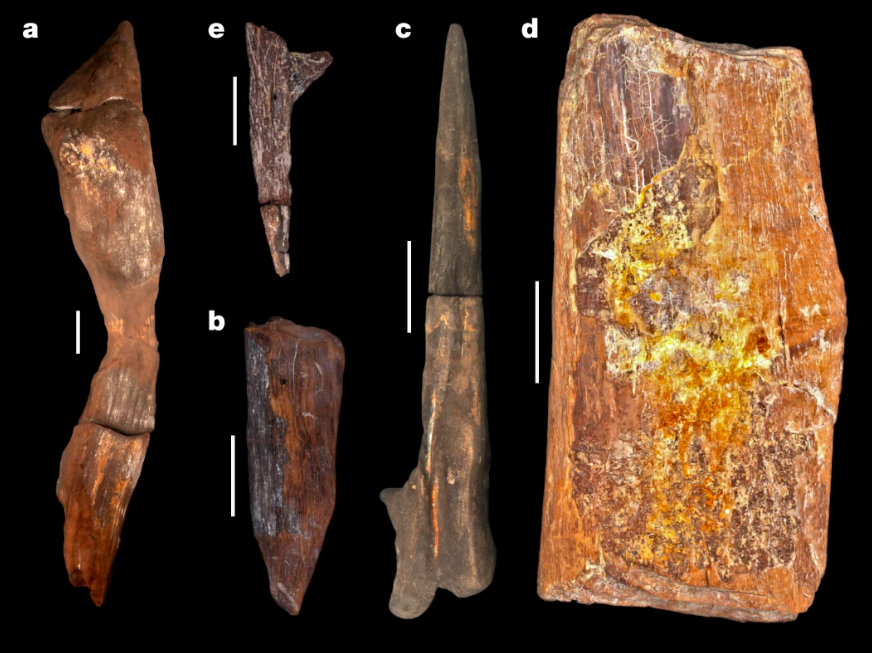
Archaeologists working in Zambia have discovered evidence of the world’s oldest-known wooden structure.
The rudimentary construction consists of two interlocking logs joined by a notch. Markings on the logs demonstrate that they were cut and chopped with a range of stone tools an estimated 476,000 years ago.
The structure, which was found upstream of Kalambo Falls near the border of Zambia and Tanzania, was likely part of a platform used as a walkway or as a site to store food or firewood, though it may also have been the base for a shelter.
One significance of the research, which was published in the scientific journal Nature on September 20, is that the wooden structure predates the rise of Homo sapiens and therefore complicates the academy’s understanding of early hominins. Archaeologists believe the structure may have been built by Homo heidelbergensis, a regional predecessor of modern humans.
Wooden structure formed by two overlapping logs. Photo: doi.org/10.1038/s41586-023-06557-9.
The discovery suggests a high level of cognitive development given completing such a structure likely required executing a complicated plan and, potentially, using language. It also challenges the view that early Stone Age humans were primarily nomadic with the water and food of the surrounding environment proving sufficient to support a sedentary community.
“These new data not only extend the age range of woodworking in Africa but expand our understanding of the technical cognition of early hominins,” the researchers wrote in Nature. “Exceptional conditions of preservation give us this glimpse of a capacity to create a built environment by hominins hitherto perceived as mobile foragers with limited technological diversity.”
Wooden artifacts from the Stone Age are exceedingly rare because they typically decompose over time. The Kalambo Falls discoveries were preserved by waterlogged sediments that were deprived of oxygen.
Archaeologists also uncovered four further wooden tools onsite—a wedge, a digging stick, a cut log, and a notched branch—dated from 390,000 to 324,000 years ago.
The samples are currently being preserved at the York Archaeological Trust in the U.K. In time, they will be returned to Zambia and housed at the Livingstone Museum, the country’s oldest and largest museum which displays a collection of regional archaeological and anthropological artifacts.
The oldest known wooden artifact is a polished plank which was found in Israel’s northern Jordan Valley in 1991 and dates back more than 780,000 years.